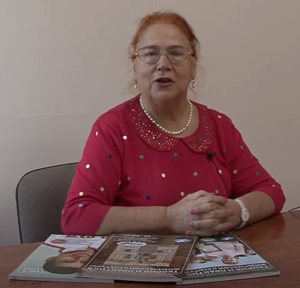Top-ranking competitive cross-country skiing events: model terrain specifications
PhD, Professor A.G. Batalov1
M.I. Sidorova1
PhD, Associate Professor M.E. Burdina1
1Russian State University of Physical Education, Sport, Youth and Tourism (SCOLIPE), Moscow
Abstract
Objective of the study was to analyze model characteristics of terrains in the top-ranking international competitive cross-country skiing events.
Methods and structure of the study. To overview the modern cross-country skiing track design trends and logics in the top-ranking events, we analyzed the 10/15km cross-country skiing events at the 2019/ 20 World Championships and 2018 Olympic Games for the key terrain characteristics including the height difference, maximal climbs, total climbs, track difficulty (d), etc.
Results and conclusion. Based on the analytical data, we found correlations between the key terrain specifications and altitude zones of the competitive events. The study data may be recommended for application in the cross-country skiing elite training systems. It should be emphasized that the progress tests should factor in the total climbs as a key external workload parameter for every training session or individual training cycles different in times and intensities – to effectively manage the training and competitive performance versus the actual difficulty levels of the upcoming competitive events.
Keywords: model characteristics, competitive tracks, cross-country skiing, competitive track, terrain specifications, rules of competitions.
References
- Batalov A.G. Modelno-tselevoy sposob postroeniya sportivnoy podgotovki vysokokvalifitsirovannykh sportsmenov v zimnikh tsiklicheskikh vidakh sporta [Targeted model design method of elite athletes' training system in winter cyclic sports]. Teoriya i praktika fiz. kultury, 2000, no. 11, pp. 46-52; 2001, no. 2, pp. 46-52.
- Burlakova E.V. Modelirovanie trenirovochnykh trass kak osnovnoy komponent programmirovaniya trenirovochnogo protsessa lyzhnikov-gonshchikov [Modeling of training tracks as key component of programming training process in cross-country skiing]. Mogilevskiy gosudarstvenny universitet im. A.A. Kuleshova. 2019. No.1 (53). pp. 33-39.
- Mezhdunarodnye pravila sorevnovaniy (ICR) po vidu sporta lyzhnye gonki [International competition rules (ICR) for cross-country skiing [Electronic resource]. Available at: https://www.fis-ski.com.
- Ramenskaya T.I. Bioenergeticheskoe modelirovanie sorevnovatelnoy deyatelnosti silneyshikh lyzhnikov-gonschikov na 18 zimnikh Olimpiyskikh igrakh (Nagano, 1998) [Bioenergetic modeling of competitive performance of the strongest racing skiers at the 18 Winter Olympic Games (Nagano, 1998)]. Teoriya i praktika fiz. kultury. 2000. No. 2. pp. 6-12.
- Suslov F.P., Gippenreiter E.B., Kholodov Zh.K. Sportivnaya trenirovka v usloviyakh srednegorya [Sports training in mid-altitude conditions]. Moscow: RSAPC publ., 1999. 202 p.
- Khmelnitskaya Y.K. Modelirovanie realizatsii funktsionalnykh vozmozhnostey lyzhnikov-gonshchikov pri prokhozhdenii lyzhnykh trass raznoy slozhnosti [Modeling implementation of functional capabilities of racing skiers on ski tracks of varying complexity]. Pedagogika, psikhologiya i mediko-biologicheskie problemy fizicheskogo vospitaniya i sporta. 2016. No. 4. pp. 42-49.


